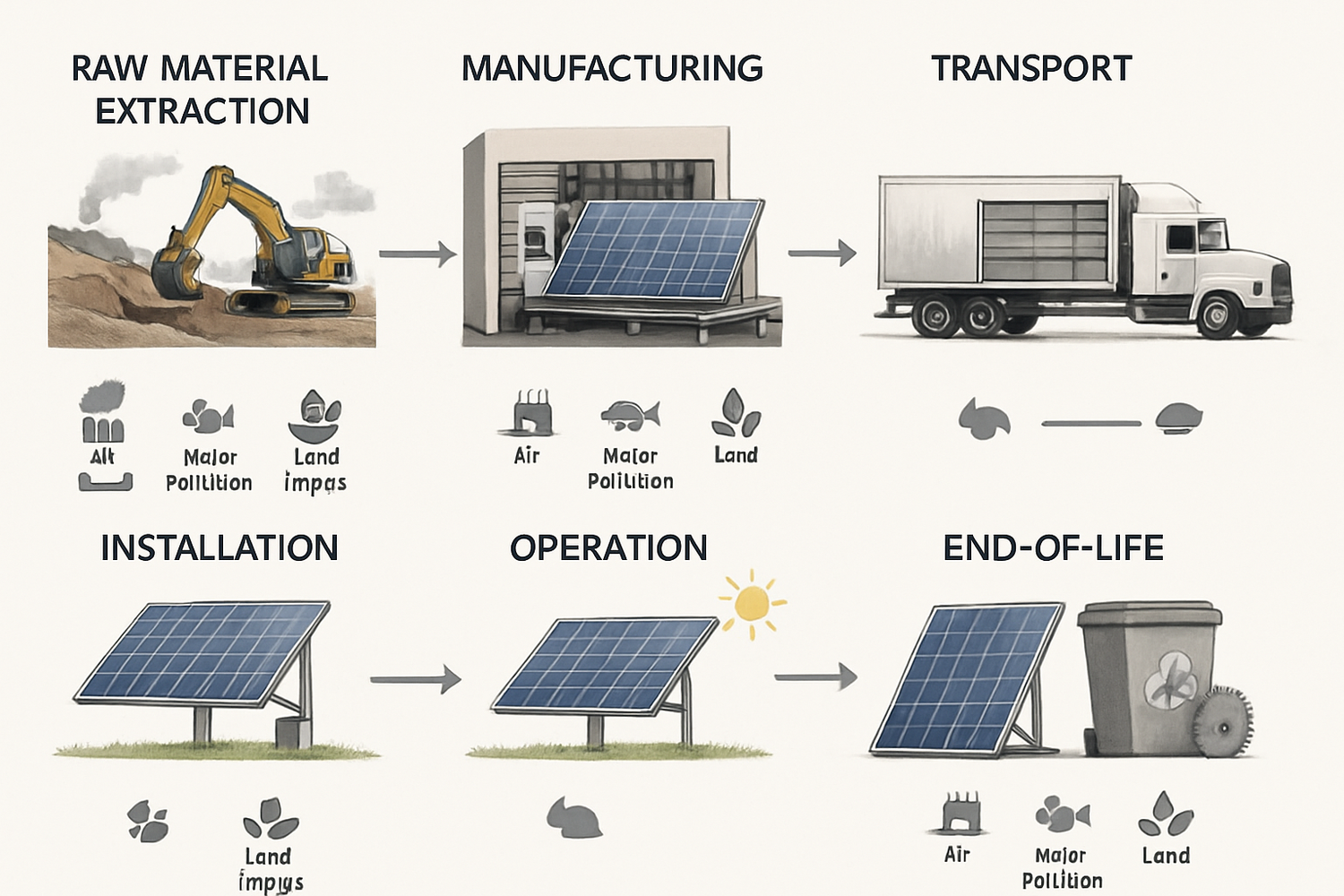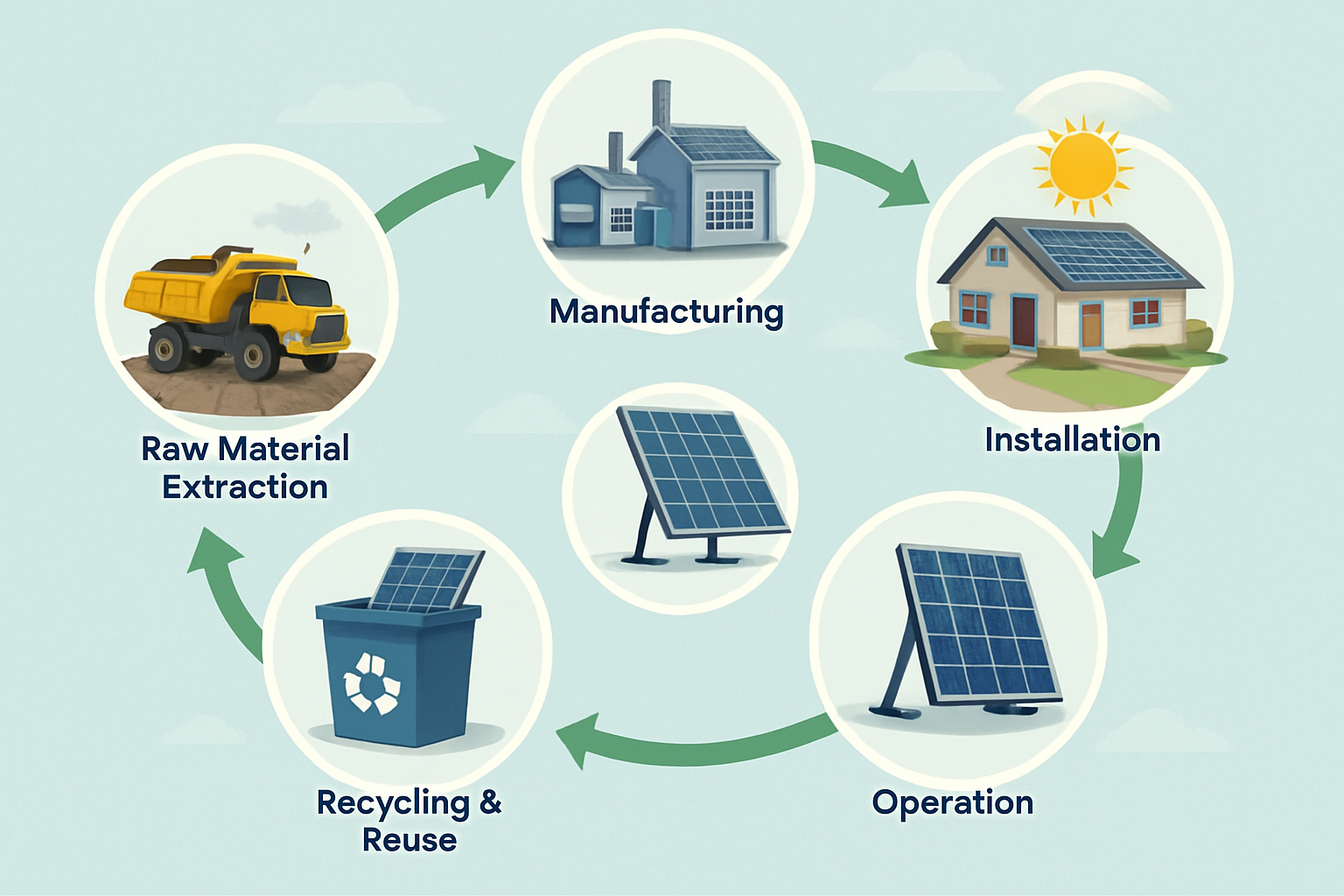The solar energy sector continues its rapid expansion, offering a promising path toward energy independence. With this growth comes a heightened focus on the environmental footprint of photovoltaic (PV) technology across its entire lifespan. Understanding these impacts requires robust analytical tools. Life Cycle Assessment (LCA) software provides the framework to quantify and evaluate the environmental implications of solar panels, from raw material extraction to end-of-life management.
Introduction: The Imperative of Sustainable Solar
Why Environmental Impact Assessment Matters
As solar installations proliferate, stakeholders demand transparency regarding their overall sustainability. An accurate environmental impact assessment moves beyond simply measuring operational emissions. It encompasses the energy and resources consumed, as well as the emissions generated, at every stage of a product's existence. For solar panels, this means considering manufacturing processes, transportation, installation, operation, and eventual decommissioning and recycling.
Introducing Life Cycle Assessment for Solar Panels
Life Cycle Assessment (LCA) offers a standardized, scientific methodology to quantify these environmental burdens. It provides a holistic view, enabling informed decisions that minimize negative impacts and enhance sustainability. For solar panels, LCA helps identify hotspots where environmental improvements yield the greatest benefits. This approach supports the development of more eco-friendly PV technologies and practices.

Understanding Life Cycle Assessment (LCA) for Solar Technology
What LCA Entails
LCA systematically compiles and evaluates the inputs and outputs of a product system throughout its life cycle. This includes raw materials, energy, water, and emissions to air, water, and soil. The process involves four main phases: goal and scope definition, inventory analysis, impact assessment, and interpretation. This structured approach ensures a comprehensive and comparable analysis.
The Solar Panel Life Cycle Through an LCA Lens
A solar panel's life cycle typically includes several key stages. It begins with raw material acquisition, such as mining for silicon, aluminum, and other metals. Next, manufacturing processes convert these materials into wafers, cells, and modules. Transportation moves components and finished panels to installation sites. The operational phase involves electricity generation over decades. Finally, the end-of-life stage includes decommissioning, disposal, or recycling. Each stage carries distinct environmental implications that LCA quantifies.
Key Environmental Metrics Evaluated
LCA software assesses various environmental metrics to provide a comprehensive picture. These often include:
- Climate Change Potential (Carbon Footprint): Measures greenhouse gas emissions.
- Resource Depletion: Quantifies the consumption of non-renewable resources.
- Eutrophication Potential: Assesses nutrient enrichment in ecosystems.
- Acidification Potential: Evaluates emissions contributing to acid rain.
- Water Depletion: Tracks freshwater consumption.
- Human Toxicity Potential: Estimates potential harm to human health.
These metrics help identify where the most significant environmental burdens occur within the solar panel life cycle. For example, the IRENA renewable costs database provides detailed data on various renewable energy technologies, which can inform the economic aspects alongside environmental assessments.
| Impact Category | Description | Relevance to Solar PV |
|---|---|---|
| Climate Change (Carbon Footprint) | Greenhouse gas emissions over the life cycle. | Quantifies embodied carbon from manufacturing to disposal. |
| Resource Depletion | Consumption of non-renewable resources. | Assesses use of silicon, silver, aluminum, and other critical materials. |
| Eutrophication | Excess nutrient enrichment in aquatic ecosystems. | Relates to emissions from energy production during manufacturing. |
| Acidification | Emissions causing acid rain. | Linked to industrial processes and energy generation. |
| Water Depletion | Consumption of freshwater resources. | Important for manufacturing processes, especially silicon purification. |
Leveraging LCA Software for Photovoltaic Energy Modeling
Core Functionalities of LCA Software
LCA software streamlines the complex process of environmental assessment. These tools offer extensive databases of materials and processes, allowing users to model various scenarios. Key functionalities include inventory data management, impact assessment calculations, and robust reporting features. Many platforms also offer visualization tools to clearly present complex data.
Data Inputs and Modeling Considerations
Effective LCA modeling relies on accurate and comprehensive data inputs. This includes material composition of solar panels, energy consumption at each manufacturing step, transportation distances, and end-of-life treatment methods. Data quality significantly influences the reliability of the results. Users must consider geographical specificities, technological advancements, and system boundaries when defining their models.
Interpreting Software Outputs for Decision-Making
The outputs from LCA software provide actionable insights. They highlight environmental hotspots, allowing manufacturers to redesign products or optimize processes. For project developers, these insights inform material selection and supply chain choices. By comparing different PV technologies or manufacturing routes, you can make data-driven decisions that reduce environmental burdens. This supports the broader goal of a sustainable energy transition.
Selecting and Implementing Effective LCA Tools
Criteria for Choosing LCA Software
Selecting the appropriate LCA software requires careful consideration. Look for tools with comprehensive and up-to-date databases relevant to the solar industry. User-friendliness, customization options, and the ability to integrate with other design or engineering software are also important. Support for various impact assessment methodologies ensures the results meet specific regulatory or reporting standards. The U.S. Department of Energy Solar Energy Technologies Office (SETO) emphasizes the importance of robust modeling for grid decarbonization, underscoring the need for reliable tools.
Practical Applications and Benefits
LCA software offers numerous practical benefits for the solar sector. It helps companies identify opportunities for material efficiency, reduce waste, and lower energy consumption in production. This leads to cost savings and improved environmental performance. Furthermore, LCA results enhance product transparency and support green marketing claims, building consumer trust. It also aids in compliance with environmental regulations and certifications. For instance, understanding the zoning assessment methodologies for utility-scale solar projects can be complemented by LCA to ensure holistic sustainability planning.
Integrating LCA into Business Strategy
Integrating LCA into business strategy moves beyond simple compliance. It positions sustainability as a core value, driving innovation and competitive advantage. Companies can use LCA to set ambitious environmental targets, track progress, and communicate their commitment to a circular economy. This strategic integration fosters long-term resilience and aligns with the growing demand for environmentally responsible energy solutions.
Looking Forward: Enhancing Solar Sustainability
LCA software plays a pivotal role in charting the path toward a truly sustainable solar future. By providing granular data on environmental impacts, these tools empower manufacturers, developers, and policymakers to make informed choices. Continued advancements in LCA methodologies and software capabilities will further refine our understanding of solar panel impacts, driving innovation towards even greener and more efficient energy solutions. This commitment to rigorous assessment helps secure a reliable and scalable energy future.
Frequently Asked Questions
What is the primary goal of LCA software in the solar industry?
The primary goal of LCA software in the solar industry is to quantify and evaluate the environmental impacts of solar panels across their entire life cycle. This includes assessing resource consumption, energy use, and emissions from raw material extraction through manufacturing, operation, and end-of-life management. The aim is to identify areas for improvement and support sustainable decision-making.
How does LCA software contribute to solar panel sustainability?
LCA software contributes to solar panel sustainability by providing objective data on environmental performance. It helps pinpoint environmental hotspots in the supply chain and manufacturing processes, enabling companies to optimize designs, reduce waste, and select more eco-friendly materials. This leads to lower carbon footprints, reduced resource depletion, and overall improved environmental responsibility.
Are there specific data requirements for using LCA software effectively?
Yes, effective use of LCA software requires specific and accurate data. This typically includes detailed information on material composition of solar panels, energy consumption at each production stage, transportation logistics, and end-of-life scenarios (e.g., landfilling vs. recycling rates). The quality and completeness of this input data directly impact the reliability and accuracy of the LCA results.





Leave a comment
All comments are moderated before being published.
This site is protected by hCaptcha and the hCaptcha Privacy Policy and Terms of Service apply.